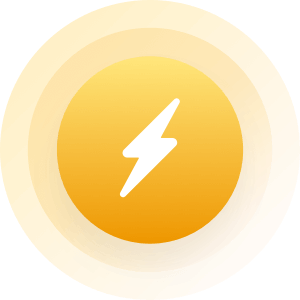| Topic: Hollow earth vs solid earth and moon creation cunundrum | |
|---|---|
|
I was thinking about this after watching a youtube video about how the moon was created. Afterward I thought about it and I came up with three different cosmological perspectives that didn't fit together, so I thought I'd throw the argument out there to see what you think. So here are the three argumental points.
1. The Earth is a uniformly solid sphere with a crust, mantle, liquid outer core and soild iron nickel core. 2. An opposing argument and theory that say's the Earth is essentially hollow, and consists of an hidden inner world. 3. The counterpoint argument, that the moon was essentially a part of the Earth that was once blasted from the Earth and became a seperate and independant astronomical body known as our moon, whether you agree with that or not. My argument is, if the Earth has got an inner liquid content, and a sufficient enough blast released this liquid content it might aquiesce into a liquid molten sphere in space and then cool to form a now solid moon. Moon sphere 1 uniform earth 1 Hollow earth 0 The problem with that is it puts the hollow Earth theory and belief out in the cold, which is also something I like to think is possible. But according to the above argument, where would a removed moon fit into a hollow Earth. Because, where would all the content to make up the moon come from? Wouldn't you just essentially have something like a cracked egg shell floating out there in space, because the moon is a quarter the size of the Earth, I don't think geometrically that could fit within the spatial area of a hollow earth. |
|
|
|
|
|
Not a topic I would ever have expected to be addressed in the forum on this site. It caught me by complete surprise, but it did attract my attention and interest.
The Moon is an enigmatic body and its true origins are unclear. The theory of it being created from coalesced ejecta is just that, a theory. It's in place as the explanation of something we simply don't know. But there is more. If you observe all the inner terrestrial planets, you'll see that only the Earth has a massive body in orbit. Mercury has no moon, Venus has no moon, Mars has two moons which are very small, irregular bodies and believed to be captured asteroids. If we classify Pluto as a planet of our system; which we should, it has a moon that is over half its own diameter. Charon, named after the boatman of the river Styx, has been suggested to be the other half of a binary planetary system and not actually a moon of Pluto itself. This theory affects us as well, since our moon, being the second largest orbiting body in relation to its planet, could have been captured as well. Some have suggested that the Moon was manufactured and is not real. You mentioned the "Hollow Earth" theory and what role that could play in the formation of our Moon. Could that massive impact that supposedly took place have thrown out enough ejecta to create our Moon and render our world hollow as a result? Interesting supposition and not lacking in imagination. If you follow the Hollow Earth theory and delve deeper into it, you will soon learn that it isn't restricted to our planet alone. It is suggested that a hollow sphere structure is standard in planetary formation and that most; if not all worlds, are hollow. These worlds have two levels. One being the surface world, the other being the inner world. As an overview of the Moon phenomenon, the following reference is useful. "Most moons are thought to have found themselves in orbit around their parent planets by way of two main routes. These are accretion (a moon formed from the same primordial matter as its parent at about the same time) and capture (a wandering moon is caught by its parent's gravitational field, and drawn into orbit). Neither of these possibilities fit the Earth-Moon system very well, for the following reasons: Accretion: Moons that form in this way are likely to have a similar composition to their parent planet. The compositions of Earth and the Moon are too different for this to be the likely method of formation. Capture: The Moon's orbit around the Earth is very close to being circular. The likelihood of this happening with such a relatively large satellite is very low. I also mentioned two other less common possibilities for moon formation: fission, where matter is thrown off a body that is rotating very fast, and impact, where a large body hits the parent hard enough for matter to be ejected into space: Fission: The Moon orbits outside of the equatorial plane of the Earth, making this an unlikely scenario. Also, there is not sufficient angular momentum in the Earth-Moon system; there would need to be a reason for it slowing down. Impact: Current theories suggest that an object of comparable size to Mars collided with the Earth, which caused much of the Earth's mantle (and that of the colliding object) to be vaporised. This material, due to the collision forces as well as hot expanding gases, was then thrown into orbit around the Earth. This material then cooled and coalesced to form the Moon. So far, this theory does not contradict the evidence available so far, and helps to explain things such as the differences in the composition of the Moon and the Earth." |
|
|
|
|
|
It also could be born with the solar system born.........because the whole solar system was created by the original sun blasting........then that's how the nights planet wheeling around it.......they're not cauting by the gravity of sun ....... they are part of the sun before back to the ancient......

|
|
|
|
|
|
As a free body captured by the gravity of Earth and subsequently orbiting it. Could be..

|
|
|
|
|







